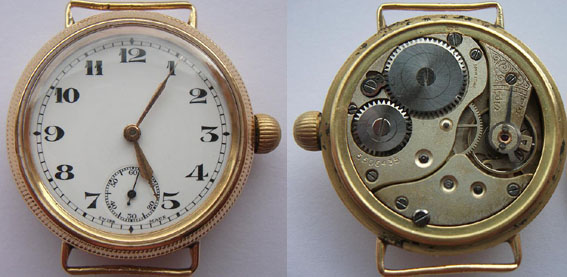This is a massive English silver pocket watch hallmarked at the Chester assay office in 1900. The enamel dial is inscribed
COASTGUARDS WATCH
J.N. MASTERS
RYE
Movement – the large gilt full plate fusee movement has a lever escapement and is signed “J N Masters, RYE” number 231711. The movement is in 90% mint condition
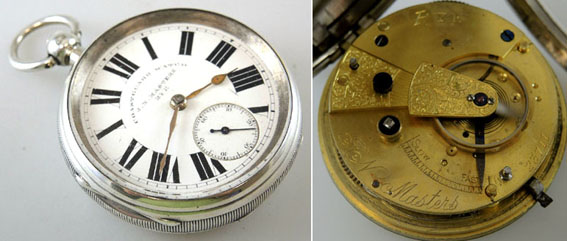
A gold cased wristwach by H. Moser & Cie, St. Petersburg circa 1910. The watch has a solid silver dial with enamel numerals.
The movement, by Louis Grisel, is a high quality lever movement with jewelled centre wheel. Watchmaker Louis Grisel worked for the market of the Russian Empire.
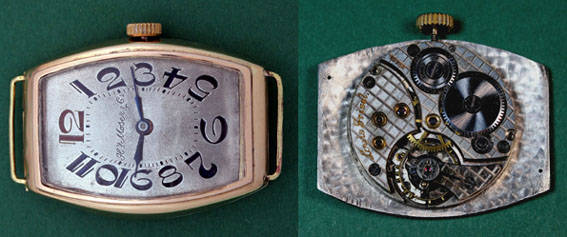
A fine example of a 9ct gold cushion-cased improved hermetic wristwatch by J.W. Benson.
Inside case has the François Borgel stamp.
Hallmarked London 1934/35

Vintage circa 1925 Vertex 18k solid gold cased trench style wrist watch in Borgel case. The dial is white enamel with black numerals and blued steel hands with sub dial and marked Sir John Bennett, London. The movement is fully jewelled with a Swiss lever escapement. The case is marked on the inside: Vertex Swiss Made, FB (with a picture of a key which is the trade mark of François Borgel) with gold import marks 18k (.750) for the London assay office 1925, and VWCo for the (Vertex Watch company).
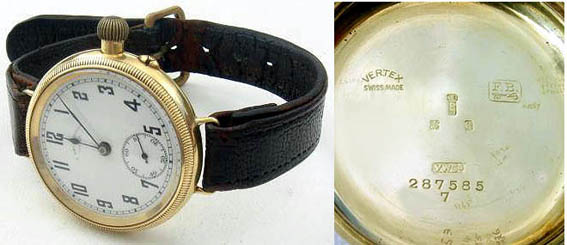
Zenith Screw Bezel Military Watch
This Zenith watch has a screw-down bezel. When removed the movement swings out of the case allowing access to the time setting regulator.
The heavy gauge 9ct gold Dennison case has the Birmingham assay stamp for 1928/29 and ALD stamp for Aaron Lufkin Dennison
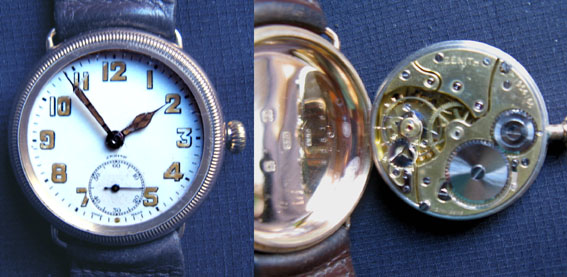
John Harwood of Bolton, with his later workshop in the Isle of Man, is credited as inventor of the first automatic wristwatch. This example of a Harwood 9ct gold bumper automatic was produced by Fortis circa 1928. The time setting is achieved by turning the bezel that then engages with the setting train. A short reverse turn disengages the setting link to the running position indicated by a red flag in the dial window at 6.
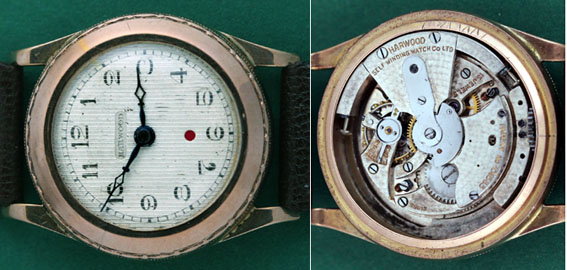
John Harwood of Bolton was the inventor of the first automatic wristwatch. This rare example of a Harwood 18ct gold bumper automatic was produced by Blancpain circa 1929. According to several adverts it was intended for the Spanish market. Harwood watches produced by Fortis had a setting mechanism driven by rotating the bezel. However, in this model the watch back is rotated such that the setting wheel (arrowed) is turned by teeth cut on the inside rim of the back itself. A short reverse turn disengages the setting mechanism, as indicated by the red mark in the window of the dial.
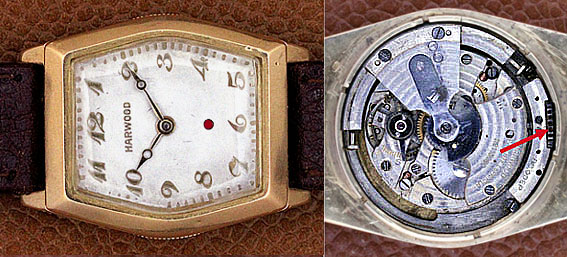
This double-back gold case with IWC cal 64 movement is in perfect condition. Sponsor CN, Charles Nicolet, hall marks for Chester 1913/14 number 657507 and 9ct (375 gold assay mark. Mineral crystal.
The cal 64 movement has both the Peerless and IWC stamps, with serial number 590987 (1913 from IWC Data Base),
It has an original military strap with gold buckle hallmarked Chester 1915/16, maker C.P - Charles Peach, Augusta Street, Birmingham, registered 1909.
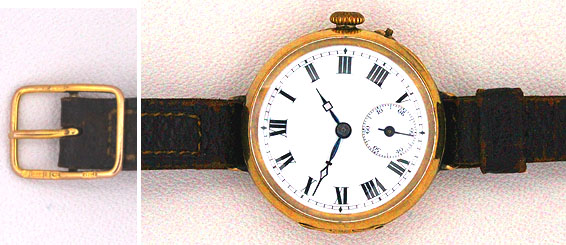
This large 35mm diameter trench style watch has a Dennison case with Birmingham hall marks for 18ct and 1919/20.
It has knurled screw-on bezel and back. The movement has been identified by David Boettcher as an early Omega movement.
(http://www.vintagewatchstraps.com/movements.php)
Almost 100 years old it still runs with good amplitude, keeping time to well within one minute per day.
It has knurled screw-on bezel and back. The movement has been identified by David Boettcher as an early Omega movement.
(http://www.vintagewatchstraps.com/movements.php)
Almost 100 years old it still runs with good amplitude, keeping time to well within one minute per day.
